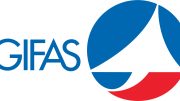NASA’s GE Aviation and MagniX deal will disrupt the aerospace industry as electric aircraft propulsion takes off, says GlobalData
- Deal set to develop electric aircraft propulsion (EAP) technology will challenge dominance of hydrocarbon-fuelled aircraft
- Airbus’s next-generation electric helicopter signals race to dominate the electric aircraft market
- EAP provides the transformation industry needs to address the pandemic’s financial impact and growing environmental concern among travellers
NASA’s award of a $253m contract to GE Aviation and MagniX to develop EAP technology over the next five years reflects the growth of EAP innovation, as well as economic and environmental pressures, according to GlobalData, a leading data and analytics company.
Francesca Gregory, Associate Analyst at GlobalData, commented: “Electric aircraft have the potential to disrupt the aerospace industry by challenging the dominance of hydrocarbon propulsion. Since the start of the pandemic, fallen passenger numbers and growth in public environmental concern have promoted the use case for electric aircraft. For example, Airbus is developing its own solution in the form of its electric quadcopter.”
Batteries
have been viewed as a limiting factor to EAP in the past. *Research has
established the requirement for a battery with an 800 Wh kg-1 energy
density for an all-electric flight of 600 nautical miles (NM), with
recent innovations enabling significant progress towards this aim.
Indeed, GlobalData’s recent report, ‘Electric Aircraft in Aerospace and Defense – Thematic Research’,
establishes a healthy target market for EAP, revealing that 50% of all
departures pre-pandemic were for flights under 600NM. Ongoing
improvements in battery energy density will enable EAP to demonstrate
its potential to play a major role in commercial flight.
The COVID-19
pandemic continues to disrupt commercial aviation’s operations as travel
regulations stifle the recovery of passenger numbers. The outbreak has
questioned the industry’s long-term profitability and spurred a trend
towards lower passenger capacity aircraft.
The GlobalData report, ‘Key Trends in Business Travel (2021)’,
confirms a 77% decline in business travellers between 2019 and 2020,
and only predicts a slow recovery of passenger numbers beyond 2024. This
trend has dire consequences, as business travellers constitute 75% of
commercial aviation’s revenue. Similar patterns in international tourist
numbers suggests radical adaptation is required.
Gregory continued:
“The scrapping of Boeing 747 production in 2022 reflects a wider trend
towards smaller carriers and lower passenger numbers. This development
provides an opportunity for EAP systems, which are suited to lighter
aircraft and allow aircraft manufacturers to clinch a ‘green restart’
from what has been a disastrous period for the industry.”
The
growing phenomenon of ‘flight guilt’ among an increasingly
environmentally conscious public requires commercial aviation to
meaningfully tackle its negative environmental impact which is becoming
more pronounced with aircraft engines now responsible for up to 2% of
the world’s carbon output.
Gregory adds: “Despite mounting environmental concerns, commercial aviation has been slow to change.Structural transformation is needed if passenger numbers are to recover to pre-pandemic levels. Electric aircraft may provide a commercial advantage going forward as emissions standards and carbon taxes will increase the cost of operating a hydrocarbon fleet. The emerging EAP industry could therefore offer an excellent opportunity for commercial aviation to make the changes needed.”
Information based on GlobalData’s reports:
‘Electric Aircraft in Aerospace and Defense – Thematic Research’
Key Trends in Business Travel (2021)
*Schäfer, A.W., Barrett, S.R.H., Doyme, K. et al; Technological, economic and environmental prospects of all-electric aircraft. Nat Energy 4, 160–166 (2019).
Source: Globaldata













Be the first to comment on "NASA’s GE Aviation and MagniX deal"